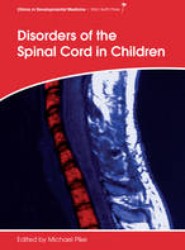(To see other currencies, click on price)
MORE ABOUT THIS BOOK
Main description:
This Atlas covers the entire spectrum of brain disease as studied with ultrasound, illustrated throughout with superb-quality images. It is aimed at neonatologists and radiologists confronted with everyday clinical questions on the neonatal ward. Most newborn brain disorders can be identified with ultrasound; this book will therefore be particularly useful in settings with limited MRI facilities. Prenatal ultrasound specialists will also find it valuable as a postnatal reference in their field of interest. Suggestions for differential diagnosis accompany all the sonographic findings, guiding the clinician in proceeding from an abnormal image to a diagnosis. This second edition of the Atlas has been brought up to date to include the many advances in technique and interpretation that have been made in the past decade. The images have been replaced with new ones of higher quality, and all the line artwork has been standardised and improved.
Readership Neonatologists, radiologists, neuroradiologists with an interest in neonatal ultrasound From reviews of the first edition: "This is the most challenging and comprehensive book on this theme, and is an essential reference for clinicians to make a correct diagnosis." Satoshi Takada, Brain and Development "This can be little doubt that this title represents the definitive work on neonatal cranial ultrasound. The authors have had extensive experience in the use of ultrasound scanning the neonatal brain for almost as long as ultrasound has been used to investigate intracranial pathology on the neonatal unit. Their combined experience is most impressive." Malcolm Leven, Archives of Disease in Childhood
Contents:
SECTION 1. NORMAL ANATOMY 1.1 Sulci and gyri 1.2 Lateral ventricles 1.3 Third ventricle 1.4 Choroid plexus 1.5 Lobar parenchyma 1.6 Midline structures 1.7 Cisterns 1.8 Basal ganglia and thalamus 1.9 Brainstem 1.10 Cerebellum 1.11 General references on normal anatomy SECTION 2. CONGENITAL ANOMALIES 2.1 Disorders of neurulation 2.2 Cephalocele 2.3 Hydrocephalus 2.4 Intracranial fluid collections 2.5 Unilateral hydrocephalus 2.6 External hydrocephalus 2.7 Disorders of the corpus callosum 2.8 Septal agenesis and malformation 2.9 Hamartoma and accessory brain 2.10 Cerebral hemiatrophy 2.11 Microcephaly 2.12 Schizencephaly 2.13 Disorders of neuroblast migration 2.14 Median prosencephalic dysgenesis holoprosencephaly 2.15 Posterior fossa anomalies 2.16 Vascular anomalies SECTION 3. ANTENATAL BRAIN DAMAGE 3.1 Antenatal intracranial haemorrhage 3.2 Global forebrain ischaemia before birth 3.3 Germinolysis 3.4 Hydranencephaly 3.5 Porencephaly 3.6 Multicystic encephalopathy 3.7 Choroid plexus pseudocyst 3.8 Moebius sequence 3.9 Twin-associated antepartum brain damage 3.10 Striatal vasculopathy 3.11 Fetopath SECTION 4. HAEMORRHAGE 4.1 GMH/IVH 4.2 posthaemorrhagic ventricular dilatation 4.3 Epidural haematoma 4.4 Subdural haematoma 4.5 Lobar cerebral haemorrhage 4.6 Cerebellar haemorrhage 4.7 Bleeding into thalamus, basal ganglia and ventricle 4.8 Term IVH 4.9 Subarachnoid haematoma and non-accidental injury SECTION 5. ASPHYXIA 5.1 Causes and clinical types of asphyxia 5.2 Neuropathological paradigms 5.3 Myelination 5.4 Maturation of sonographic changes 5.5 Brain swelling 5.6 Haemorrhage in areas of selective neuronal necrosis 5.7 Parasagittal cerebral injury 5.8 Leukomalacia 5.9 Selective neuronal necrosis to cortex, deep grey matter and hindbrain 5.10 Primary cortical injury 5.11 Focal infarction with asphyxia 5.12 Cerebral blood flow velocity 5.13 Combinations of paradigms 5.14 Scoring the gradation of injury SECTION 6. ISCHAEMIC STROKE 6.1 Arterial 6.2 Venous sinus SECTION 7. PRETERM WHITE-MATTER INJURY 7.1 Pathogenesis 7.2 Neuropathology 7.3 Venous infarction 7.4 Risk factors 7.5 Timing 7.6 Imaging aspects 7.7 New approach SECTION 8 MISCELLANEOUS 8.1 Kernicterus 8.2 Hypoglycaemia 8.3 Hyperglycaemia 8.4 Inborn errors of metabolism 8.5 Reversible encephalopathy 8.6 Bacterial meningitis, ventriculitis 8.7 Air embolism 8.8 Craniocerebral erosion 8.10 Brain perforation 8.11 Neuroectodermal disorders 8.12 Leukodystrophy 8.13 Tumour
PRODUCT DETAILS
Publisher: Mac Keith Press
Publication date: July, 2010
Pages: 400
Dimensions: 213.00 x 286.00 x 27.00
Weight: 1646g
Availability: Available
Subcategories: Diseases and Disorders, Obstetrics and Gynaecology
From the same series






































